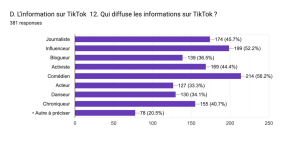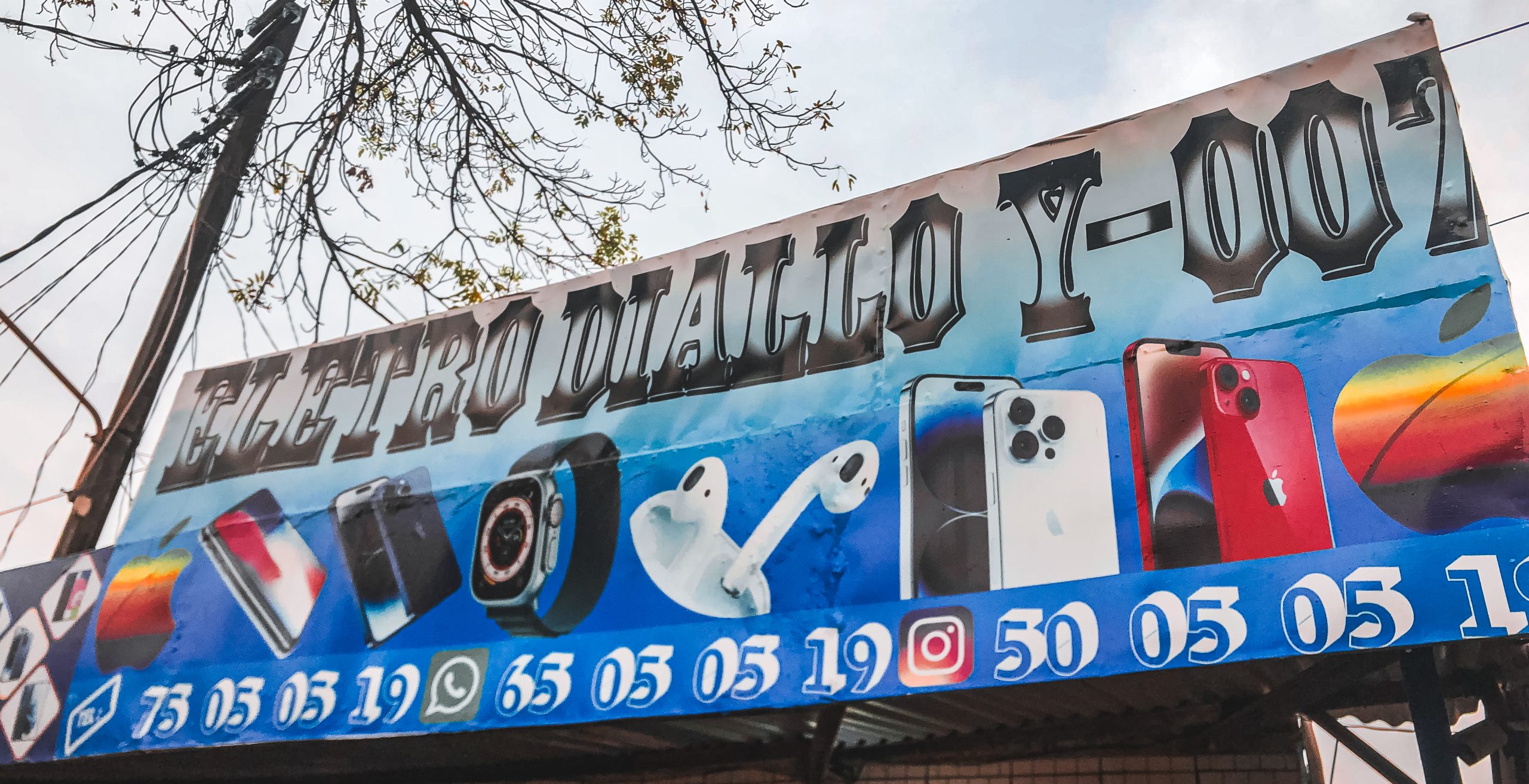This blog is based on a research collaboration between DDMAC (Decoding Digital Media in African regions of Conflict) and V4TA (Voice4Thought Academy).
It is a bright afternoon as we arrive at the office of an NGO in Bamako, in a neighborhood known for its dense community of displaced. The site is quietly placed among the dazzling streets where the humming of engines merge with the trending tracks of TikTok’s sound library. TikTok is the reason why we arrived here, to meet Abdoulaye[1] and discuss the world of limitless content. A world that has not gone unnoticed to most Malians.
Abdoulaye is a Malian man in his late 20’s, who introduces himself with his first name and social media pseudonym. As a longtime blogger and factchecker he has a lot to tell about the growing usage of TikTok in Mali. He thought-provokingly discusses the decreasing popularity of Facebook in comparison to TikTok as migration. “Increasingly, human brains pay more attention to videos than texts”, Abdoulaye says. “So people started to migrate to TikTok at the time of Covid-19. Over time, Malians began entertaining themselves on TikTok.” Thus, the young actors of the social media TikTok trace the popularity of this platform in Mali to the year 2020. Since that date, more and more Malians are using this network for various reasons. From means of entertainment to professional purposes, TikTok is gradually becoming a large space of interaction between different actors of all genders and ages. Given the massive use of this virtual space in Mali, it would be essential to question “the place of TikTok” in the daily lives of Malians. Is TikTok, then, a new home for Malian Internet users? Is it a refuge for those in search of social contact, entertainment, and audiovisual communication? What means of expression is it for Internet users?
During five days, we, Aïssa and Luca, sought to understand TikTok by organizing a focus group and interviewing influencers, media experts, and entrepreneurs in the industry. Over a period of one year, we have been active as researchers and consumers of TikTok in Mali, by observing and participating online. The research is a collaborative effort of DDMAC (Decoding Digital Media in African regions of Conflict) and V4TA (Voice4ThoughtAcademy) to grasp how Malian TikTok users represent, experience, and give meaning to conflict.
Dancing boys and girls, slammeurs and slammeuses, composers, comedians, mannequins, athletes, féticheurs, marabouts, political analysts, propagandists, and factcheckers. A survey V4T and DDMAC conducted in May 2023 on TikTok usage in Bougouni, Bankass, Douentza, Gao, Niono, Ségou, San et Tombouctou shows that the list of different participants on TikTok is long and ever-increasing (see Figure 1). The majority of these TikTokers are young and live in the urban areas of Mali. They have the necessary conditions, like stable electricity and connection, and the financial capacity to buy 4G. Both are necessary, because the video platform slurps data with a tempo much like we quickly slurp small cups of sweet Malian tea during the interviews. The smartphone user pays around 2000 CFA for an Internet card with 3GB of data. This is expensive, in a context where the prices of essential needs also continue to rise. Thus, TikTok is a luxury for some and possibly exacerbates class difference.

Figure 1 Survey results of the question “Who spreads information on TikTok?”
At the same time, less affluent and educated Malians are more active on TikTok in contrast to Facebook. Their activity is a result of the audiovisual format, which allows Malians who have little or no experience reading and writing to communicate and consume content in native languages. Interlocutor Bakary, a male blogger working for a factchecking agency, stated this gives youth autonomy and the means to participate and express themselves. We meet another TikToker with more than 50 thousand followers at a grin that is connected to a small petrol station. His name is Drissa. He started working as a chauffeur after finishing secondary school. Whenever possible, usually several times a week, he travels on his motor between Ségou and Bamako to make TikToks with his grandmother. He says TikTok allows him to discuss the everyday live of his friends at the grin. He said: he uses humor to raise awareness and convey messages to his listeners, who are mostly young people from working-class neighborhoods, young people with a lower level of education or those living in precarious situations. Especially, those who have small addictions such as to ansul tobacco, drugs, gambling, as a means of escape from their daily problems. These findings show the contradictory and complex effects that social media usage has on people’s lives in Mali.
During the five days, we collected the evidence that TikTok brings along many opportunities for those who succeed to captivate the audience’s attention. This is no easy job. As we roam around the restaurants and sidewalks of Bamako, we see how quick people scroll through the For You Page in search for entertainment. Abdoulaye explains that, therefore, the first sentence of a TikTok is essential to arouse someone’s curiosity. In this sense, if one aspires to attract people’s attention to its content this young Malian TikToker recommends highlighting the engaging parts of the topic that is covered in a video. Similarly, young actors of social media highlight several other techniques to attract a large number of followers. The 22-year old Hawa, an influencer who got active on TikTok in 2021 and tells us that since 2022, she has managed to reach a following of over 40 thousand people thanks to her fabulous dance, make-up, challenge, and transition videos. The story of this young mannequin adds to the list of techniques. The timing, lightning, location, style, and consistency are important to create quality content. Thus, facing the multiplication of content creators on TikTok, the young Malian TikTokers are unanimous that “creativity” is an effective way to stand out from the crowd. To become known and visible on TikTok, Malians use these strategies or happen to get lucky with the algorithm. According to Hawa an influencer is someone with many followers or views, who creates content and actively works on it. They have the capability to influence people. Obviously, the influence that the young virtual influencers have on their audiences can also extend to their real lives, to the point where the conflict of two virtual stars also becomes that of their fans.

Figure 2. A studio for influencers in Bamako. © Luca Bruls
To build a career of fame today, TikTokers work together with agencies and brands. A creative economy has arisen. Meaning that youth can make money through creativity and making aesthetically-pleasing, fun videos. In the context of rising prices and limited job opportunities, Malians welcomely embrace this type of work. Drissa elaborates how he started receiving 20 thousand CFA for advertisements. If his clients were happy, he received more money and products, like caps and T-shirts. A few days after our meeting, he tagged Luca in a TikTok where he and his friends enthusiastically dance with boxes of tea to a song about a specific tea brand. His audiences wish him good luck and send a rain of emojis. Will he influence their purchases?
Finally, influencers are a new category of actors in the media landscape, and it is mostly the youth who represent this category. Can we therefore say that we are dealing with “the generation of influencers”? An era, wherein “ordinary” people can become famous by making authentic and viral content, rather than national celebrities who build fame through scheduled TV or radio hours, which were more dominant in the traditional media landscape in Mali. This new type of creative work has implications for the livelihood of young Malians. How they organize themselves financially as well as socially. Keep an eye out on our next blog to learn more about the impact of conflict in TikTokers’ coming of age.


